Editor’s note: In the photo above, a Pale-legged Leaf Warbler emits its characteristic tink call in Microforest 4, Cape Nanhui, Pudong, 27 Aug. The tink call of Pale-legged is appreciably higher-pitched than that of Sakhalin Leaf Warbler. Distinguishing the two calls is the subject of this post. — Craig Brelsford
by Craig Brelsford
Founder, shanghaibirding.com
Last September, in “Pale-legged Leaf Warbler & the Shanghai Big 5,” I asserted that Pale-legged Leaf Warbler is safely separable from Sakhalin Leaf Warbler only by song. I was wrong. Call as well as song is a reliable separator. In this post, I am going to tell you how I arrived at this insight, and I will show you how you too can achieve clear, indisputable ticks of these tricky species through call alone.
Experts since at least as far back as 1989 have been arguing that Pale-legged Leaf Warbler Phylloscopus tenellipes and Sakhalin Leaf Warbler P. borealoides are separable not only by their distinctive songs but also by their calls. Thailand-based birder and shanghaibirding.com contributor Phil Round is among those making that argument. Round and his co-authors write: “[T]he call of P. tenellipes is markedly higher in frequency than that of P. borealoides” (Round et al., “Addition of Kamchatka Leaf Warbler Phylloscopus examinandus and Sakhalin Leaf Warbler P. borealoides to Thailand’s Avifauna,” downloadable through shanghaibirding.com).
If your ear is good, or even if your ear is just average and you have a sound-recorder, then you too can appreciate the higher frequency of the call of Pale-legged. A sound-recorder is important, because if you upload your recordings to databases such as eBird and the Macaulay Library, then you will be able to “see” the sound in the audio spectrogram.
Our first exhibit is the spectrogram of a call I sound-recorded of Sakhalin Leaf Warbler on 8 May 2016 in Cape Nanhui’s Microforest 4 (30.953225, 121.959083). The frequency is 4.8 kilohertz, a number that matches closely the frequency of Sakhalin calls on xeno-canto.org.
Here is the sound-recording:
Sakhalin Leaf Warbler, call, Microforest 4 (30.953225, 121.959083), May (00:15; 1 MB)
Now consider the spectrograms and sound-recordings of Pale-legged Leaf Warbler below. The spectrogram immediately below was recorded by me on 10 June 2016 in my wife Elaine Du’s hometown of Boli, Heilongjiang, part of the breeding range of Pale-legged Leaf Warbler. The call (here a grace note) and song both clock in at about 6 kHz, a frequency a full 25 percent higher than the call of Sakhalin Leaf Warbler and, as with Sakhalin, consistent with the frequencies of Pale-legged calls on xeno-canto.org.
Here is the sound-recording:
Pale-legged Leaf Warbler, call and song, Xidaquan National Forest (45.727751, 130.317316), Boli, Heilongjiang, June (01:59; 6 MB)
The spectrogram below is of a brief sound-recording I made in Microforest 4 this past Sunday. The song element of this passage migrant is absent (though note that I have heard Pale-legged and Sakhalin singing in Shanghai in spring). The call has a frequency of 5.9 kHz and clearly belongs to Pale-legged Leaf Warbler.
The sound-recording:
Pale-legged Leaf Warbler, call, Microforest 4 (30.953225, 121.959083), 27 Aug. (00:01; 193 KB)
Why should you care about all this? Because prepared birders have a chance to get solid ticks of “Pale-Saks” that are merely calling and not necessarily singing. If you hear a Pale-Sak calling and trust your ear (or better yet, sound-record the call and later analyze the spectrogram), then you may be able to go beyond the safe, boring record of “Pale-legged/Sakhalin Leaf Warbler” to a more satisfying full tick.
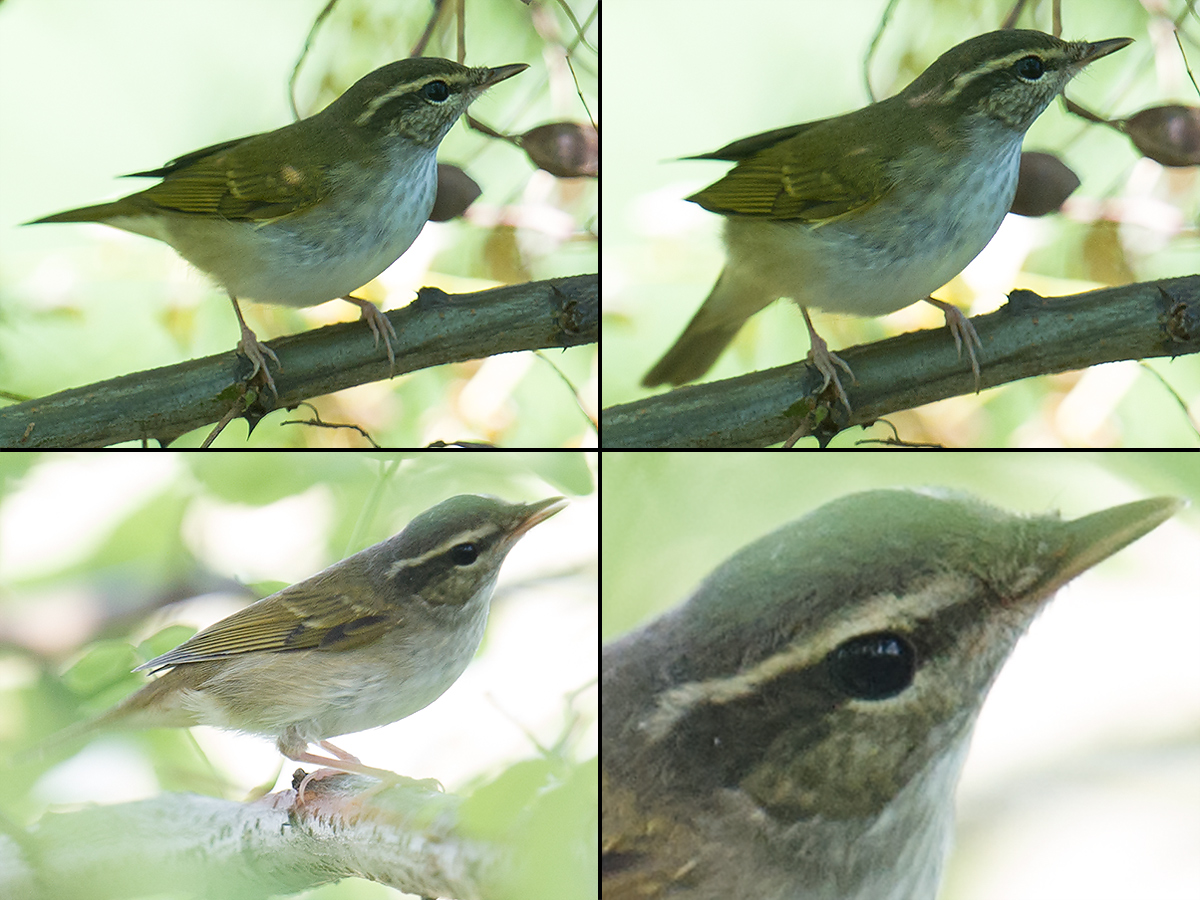
Accurate, plentiful records from Shanghai will help researchers such as Round get a clearer picture of the movements and population of these understudied species. As Round et al. write: “Increased sampling of migrants may also resolve the differences in timing of passage between P. examinandus and P. borealis on the one hand, and P. borealoides and P. tenellipes on the other” (“Addition”; hyperlink mine).
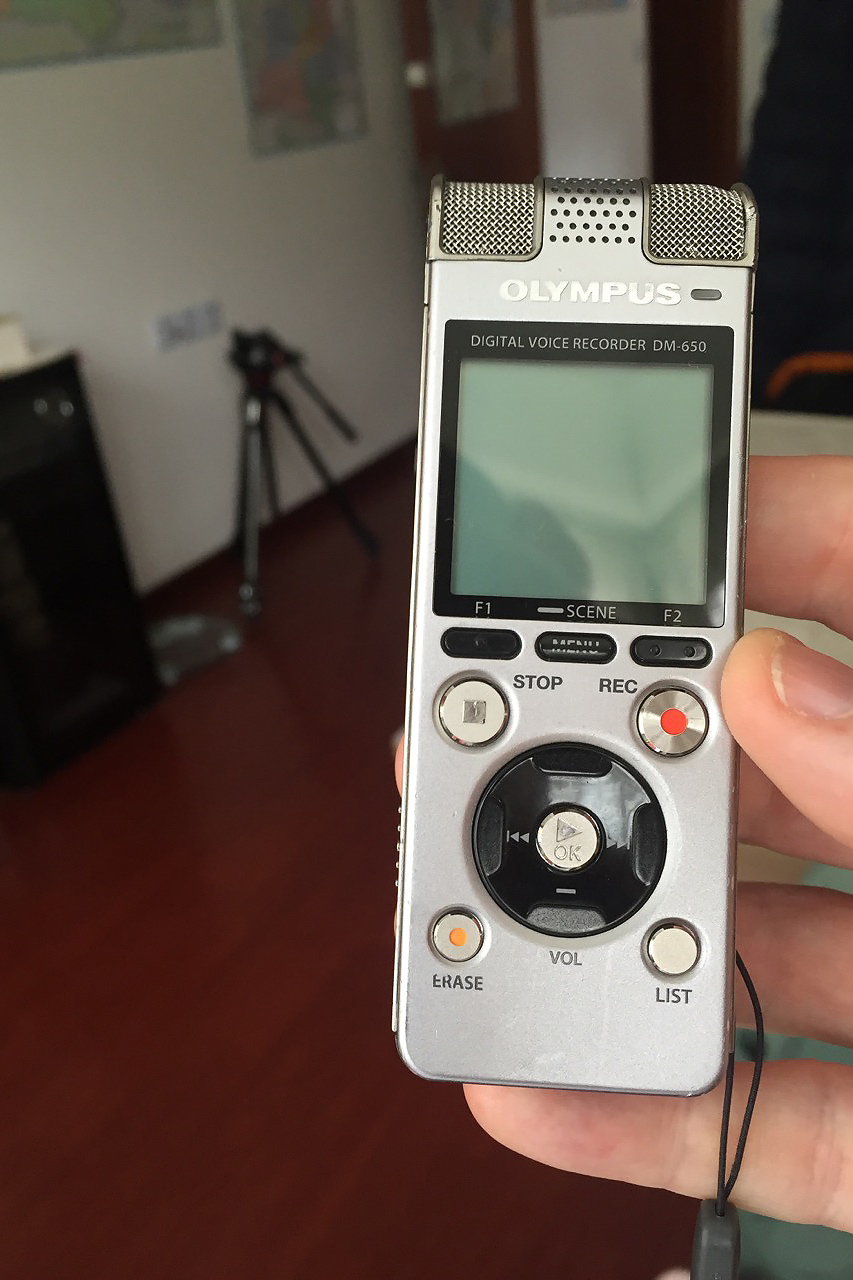
What’s more, you do not need to spend much or even know much to record good audio. My Olympus DM-650 costs less than US$250. I have no microphone other than the one built into my pocket recorder, and I possess no parabola. I record in lossless 48kHz .wav. The very scientific-looking spectrograms displayed in this post are generated automatically by eBird and Macaulay.
In Shanghai and throughout China, important facts about common birds such as Pale-legged Leaf Warbler and Sakhalin Leaf Warbler remain unknown. This ornithological semi-wilderness is both difficult and exciting. If we rise to the challenge and become better birders, then we will make new discoveries and blaze a trail of knowledge for future birders to follow.

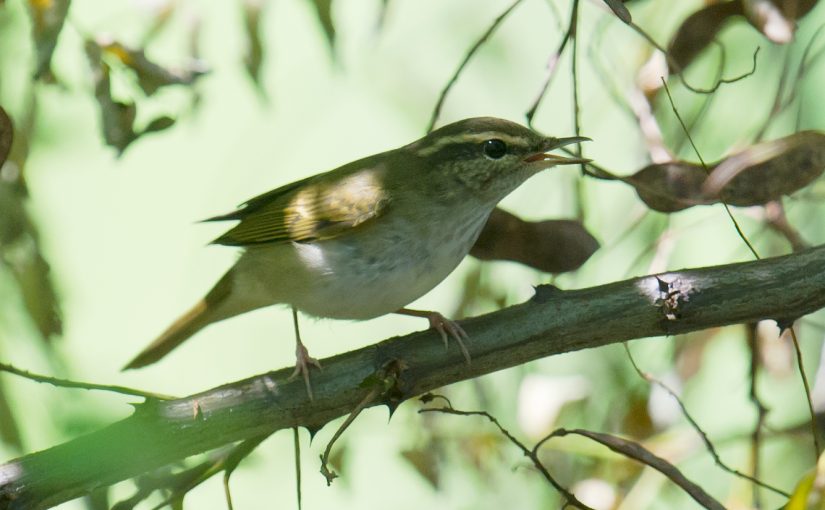
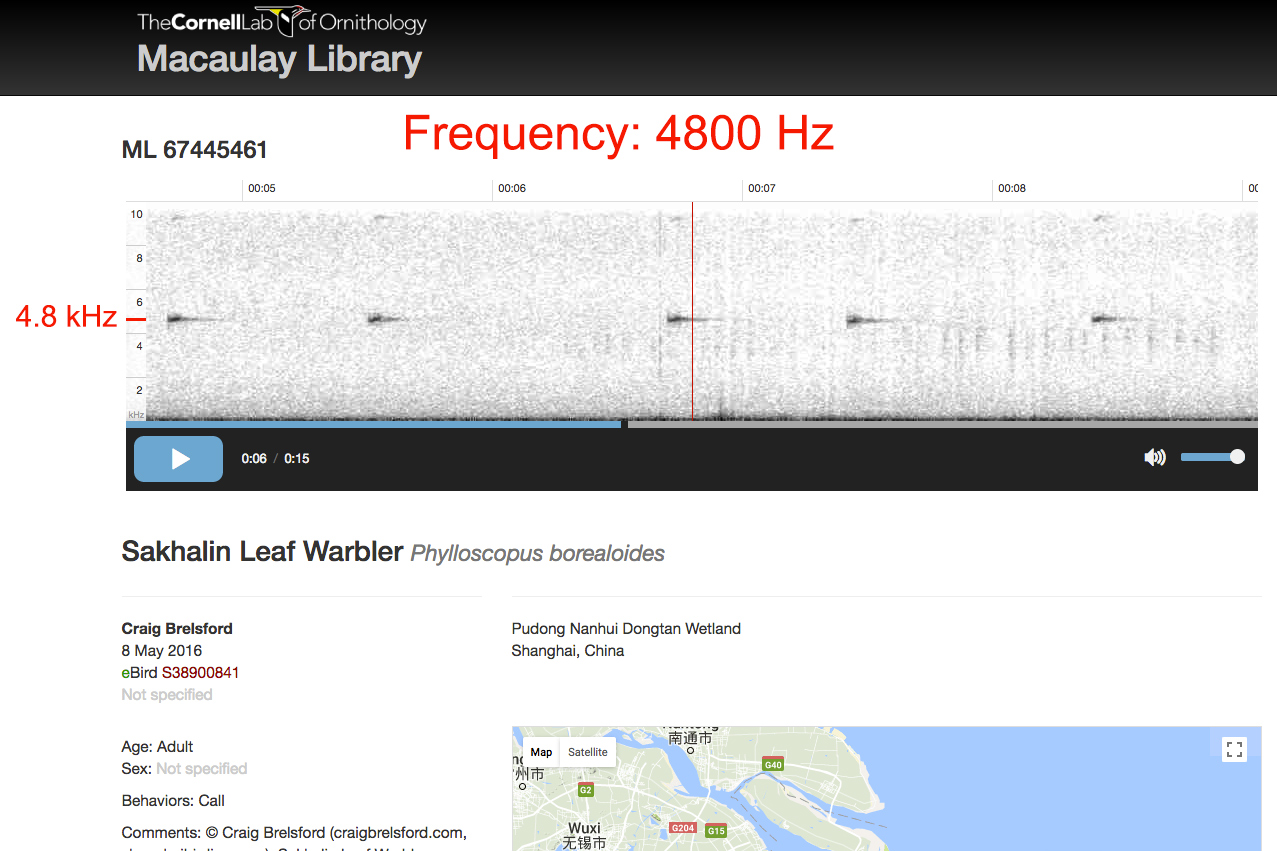
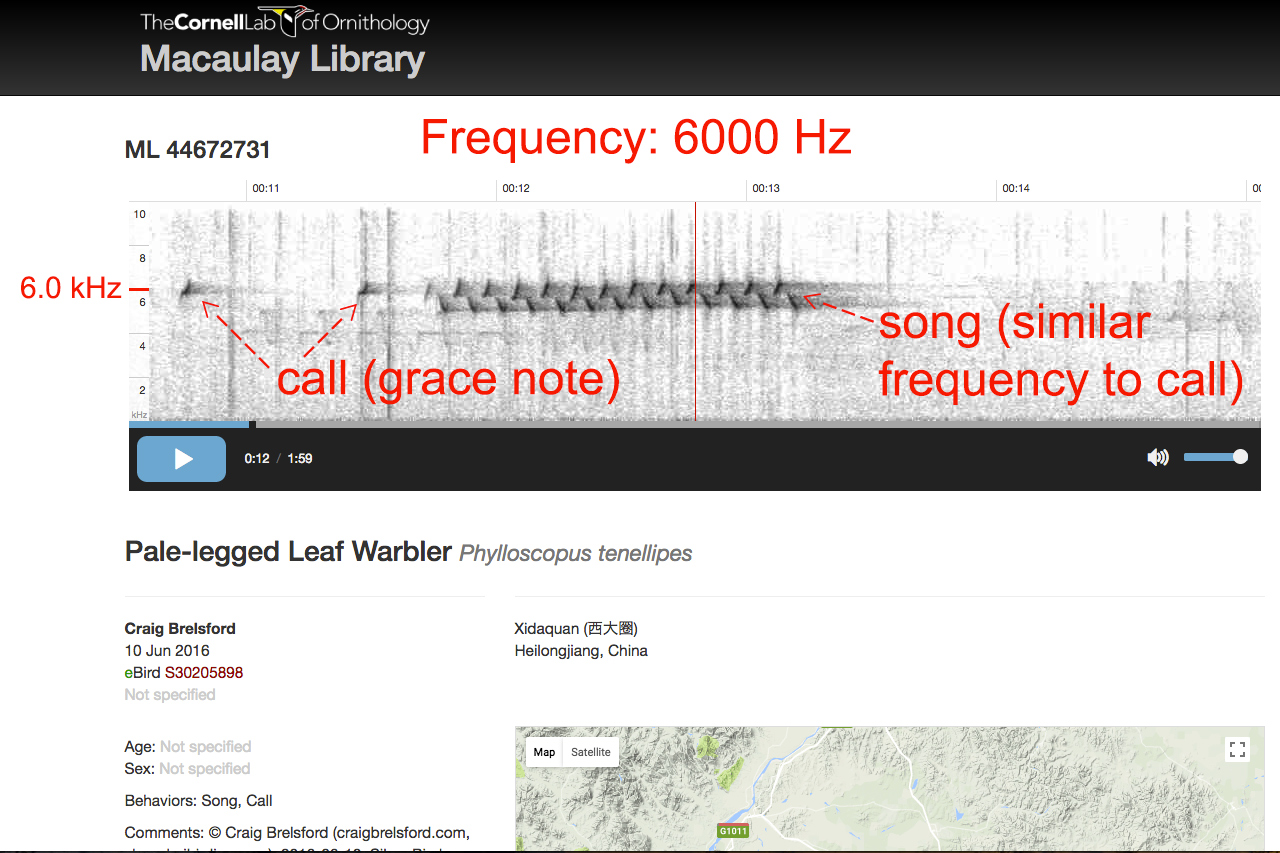
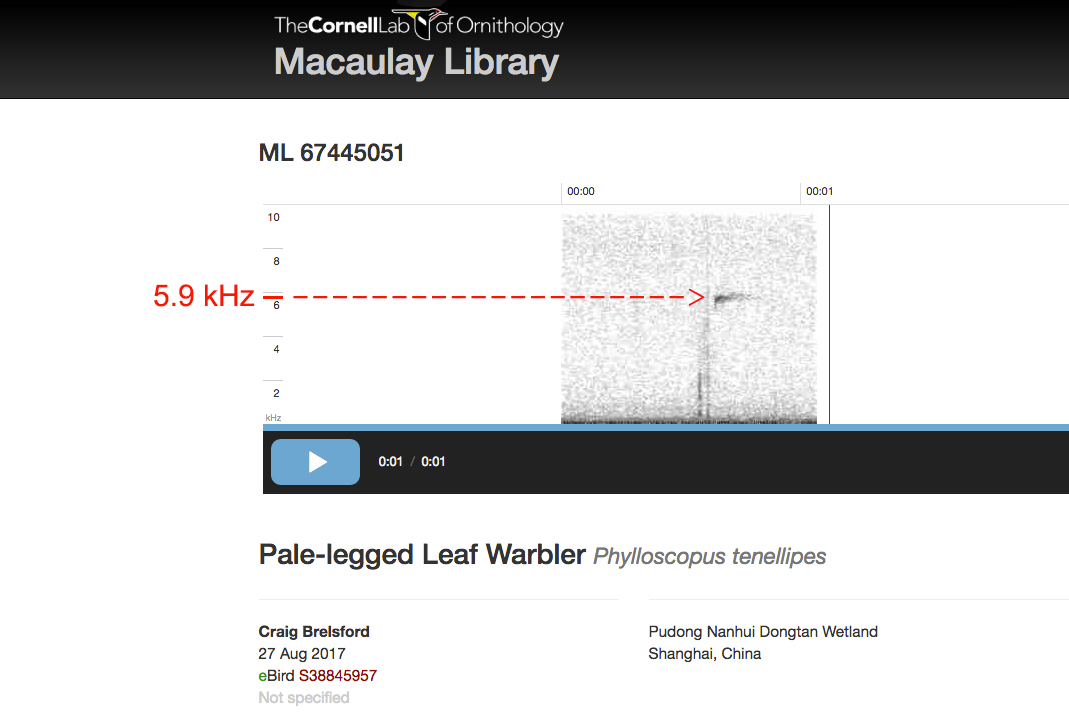
The diagnosability of the calls of Sakhalin and Pale-legged has already been examined and published in our paper (Yap et al. 2014; Birding Asia 21: 76–81). You should probably mention this somewhere.
Thanks for reading, congratulations on your paper, and thanks for calling our attention to it; the more resources, the better.
You understand, I’m sure, that I wrote a post, not a scholarly article, and that I made no attempt to treat exhaustively, nor did I perceive an obligation on my part to treat exhaustively, the papers published on the subject of Pale-Sak calls.
As I give preference to the work of contributors to shanghaibirding.com, and inasmuch as Phil Round has written a guest post for and made other notable contributions to this site, I felt a particularly strong need to refer to his work in my post.
Others’ work on Pale-Sak may be just as deserving of mention as the article I cited; I don’t pretend to have the last word on the subject. I therefore welcome the information you have provided.
Dear Craig,
Your post on separating Pale-legged and Sakhalin Leaf Warbler on call was very interesting for the editors of Dutch Birding (https://www.dutchbirding.nl/journal), particularly in context of the vagrancy of both species to the Western Palearctic (the first record of Pale-legged in the WP was last autumn).
Maybe you are interested in adapting your text from blog for a short paper to Dutch Birding? It would be very useful for WP birders in looking for both species during autumn migrantion/vagrancy of the eastern Phylloscopus species in the WP.
All the best
Lukasz Lawicki
Dutch Birding
Hi Lukasz,
I will be honored to write for Dutch Birding. I feel a particularly strong connection to Dutch Birding, because I lived in the Netherlands from 2001 to 2007 and began my birding career there.
Good article. In Thailand last winter I found the difference in calls quite noticeable. I also thought that I had some birds calling in the tops of trees on the summit of Doi Lang. These sounded like Sakhalin. All the Pale-legged I saw were in scrub, low down.